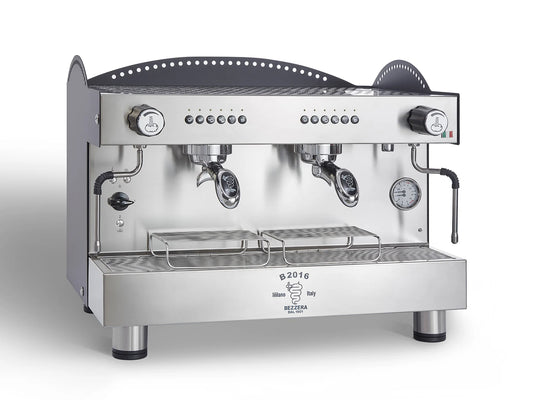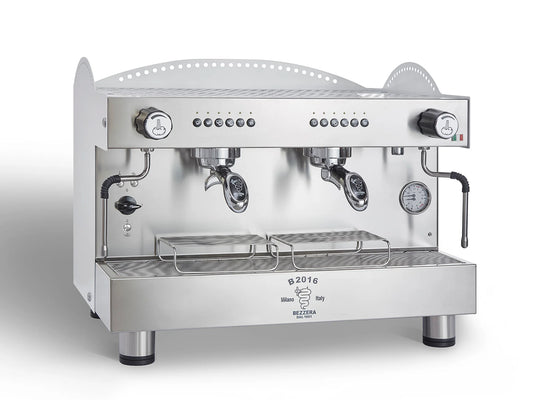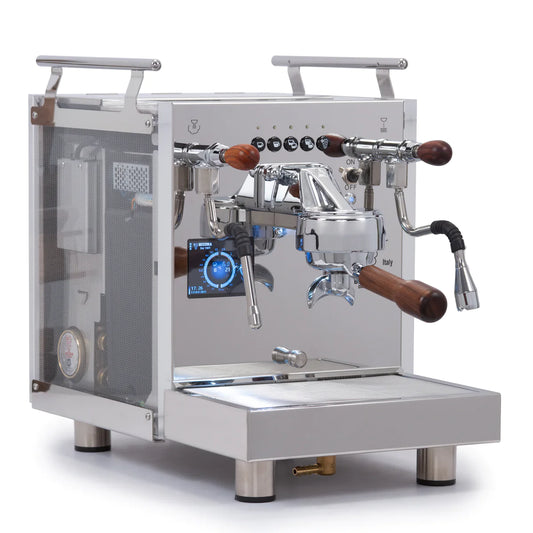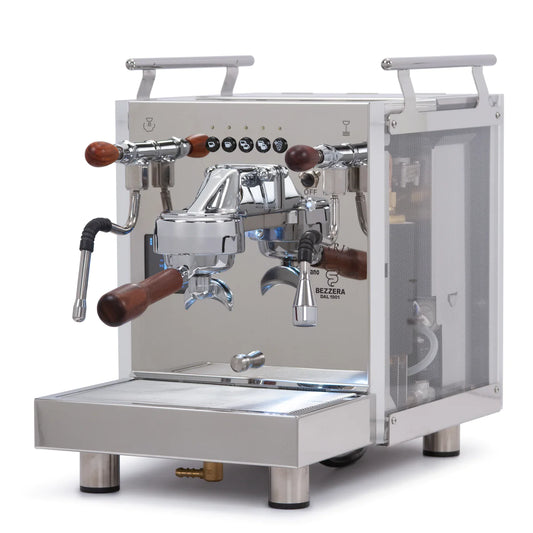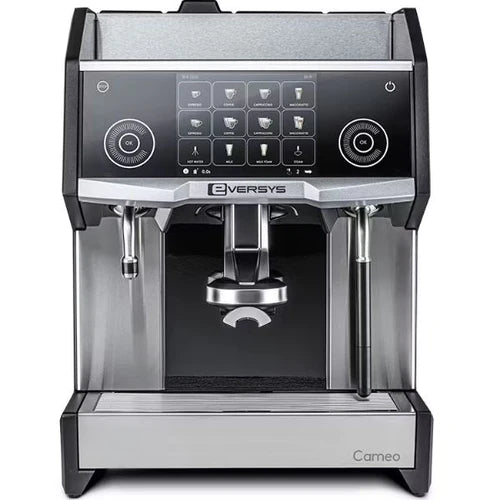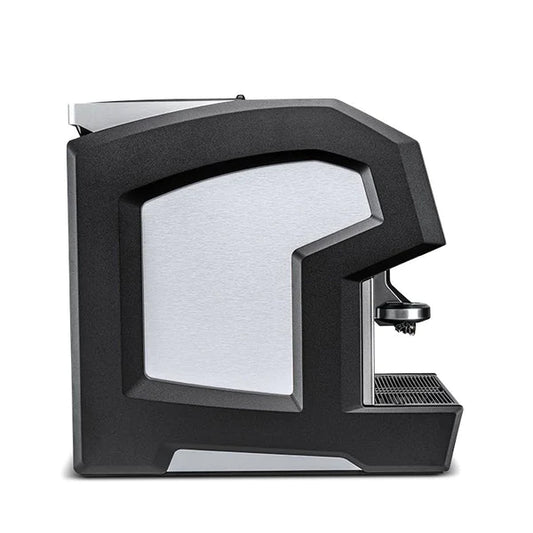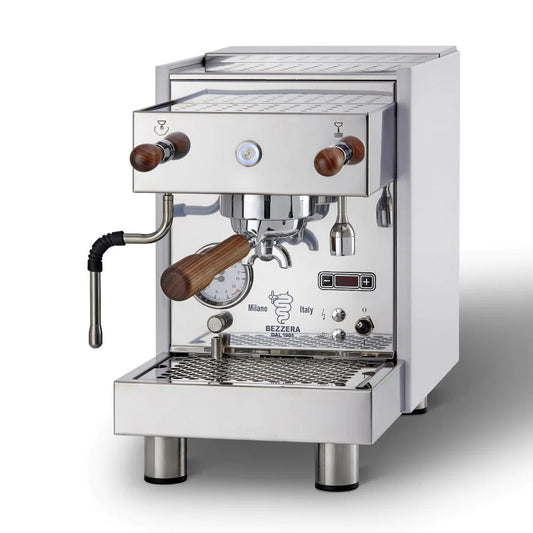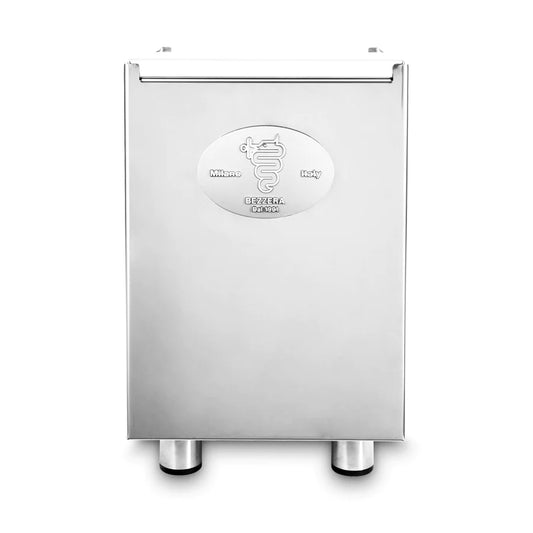Choosing Between a Coffee Machine and an Espresso Machine: A Comprehensive Guide
Table of Contents
- Understanding Coffee Machines vs. Espresso Machines
- Key Factors to Consider When Choosing Your Brewer
- Selecting the Right Espresso Machine
- The Importance of Grind Size
- Real-World Examples of Coffee Machines
- Conclusion
Key Highlights:
- Brewing Differences: Coffee machines utilize gravity-fed brewing for a milder flavor, while espresso machines employ a pressurized system for a robust shot.
- User Requirements: Espresso machines require more maintenance and user interaction, making them suited for those interested in crafting specialty drinks, whereas coffee makers offer convenience and speed.
- Key Features: When selecting an espresso machine, look for at least a 9-bar pump and temperature control; for coffee makers, consider brewing capacity and efficiency.
Introduction
The debate between coffee machines and espresso machines is a common dilemma for both casual drinkers and connoisseurs. Each type of brewing appliance offers distinct advantages and caters to different tastes and lifestyles. With a growing interest in home brewing, understanding the nuances of these machines can greatly enhance your coffee experience. This exploration highlights essential considerations for choosing the right machine, from the type of beverages you desire to your budget and maintenance preferences.
Understanding Coffee Machines vs. Espresso Machines
The primary distinction between coffee machines and espresso machines lies in their brewing methods. Coffee machines typically use a gravity-fed approach, producing milder coffee that appeals to those who prefer larger quantities and a more straightforward brewing process. In contrast, espresso machines utilize high-pressure extraction, resulting in a concentrated beverage that forms the base for various specialty drinks like lattes and cappuccinos.
Kevin Carter, a Senior Product Manager at Hamilton Beach, emphasizes that the choice between the two should hinge on several factors: the type of coffee beverage you prefer, ease of use, time commitment, and, importantly, your budget. He notes that traditional coffee makers are generally simpler and less expensive, making them accessible for those who enjoy drip-style coffee. Conversely, espresso machines cater to individuals eager to learn the art of brewing and milk frothing, although they often entail a steeper learning curve.
Key Factors to Consider When Choosing Your Brewer
Before making a purchase, it’s essential to evaluate your specific needs and preferences. Here are some pivotal points to consider:
- Type of Beverages: Do you prefer a robust espresso or a lighter drip coffee? Understanding your beverage preference is vital. Espresso enthusiasts will benefit from investing in a quality espresso machine, while those who enjoy a casual cup of coffee might find a coffee maker more suitable.
- Ease of Use: Consider how much time you want to dedicate to brewing. Coffee makers are typically user-friendly and designed for speed, making them ideal for busy mornings. Espresso machines, however, may require practice to master the brewing technique and milk frothing.
- Budget: Espresso machines generally come with a higher price tag, especially models with advanced features like built-in grinders and milk frothers. Assessing your budget will help narrow down your options.
- Maintenance and Cleaning: Espresso machines often demand more frequent cleaning and upkeep compared to coffee makers. If convenience is a priority, a simpler coffee machine may be the better choice.
- Hybrid Options: While some machines can brew both coffee and espresso, experts like Carter argue that having separate appliances typically yields better results. This allows for optimal brewing conditions tailored to each beverage type.
Selecting the Right Espresso Machine
If you opt for an espresso machine, certain features enhance your brewing experience:
- Pump Pressure: Look for machines with a pump pressure of at least 9 bars. This is crucial for producing the desired crema, which contributes to the espresso's flavor and texture.
- Temperature Control: Machines that maintain a brewing temperature between 195°F and 205°F yield better results. Consistent temperature is essential for extracting flavors effectively from the coffee grounds.
- Size and Design: Consider the machine's footprint in your kitchen. Compact designs are available for those with limited space, offering convenience without sacrificing quality.
The Importance of Grind Size
An often-overlooked aspect of brewing is the grind size of the coffee beans. Different brewing methods require specific grind sizes to optimize flavor extraction:
- Drip Coffee: This method typically requires a coarser grind. If the grind is too fine, it may clog the machine and lead to over-extraction, resulting in bitter flavors.
- Espresso: Fine, consistent grinds are essential for espresso preparation. The pressure used during brewing demands a finer texture for optimal extraction.
Investing in a quality burr grinder is advisable, as it can yield both coarse and fine grinds effectively, allowing for versatility in your brewing methods. Regular drip coffee makers usually require a medium grind, while espresso demands finely ground coffee for best results.
Real-World Examples of Coffee Machines
To further illustrate the differences between coffee and espresso machines, consider the following popular models:
- Hamilton Beach FlexBrew Coffee Maker: This versatile machine allows you to brew up to 12 cups of drip coffee or a single-serve K-Cup, appealing to households with varying preferences. Its user-friendly interface and quick brewing capabilities make it a great choice for busy mornings.
- Breville Barista Express Espresso Machine: A favorite among espresso lovers, this machine combines a built-in conical burr grinder with precise temperature control. It’s designed for those serious about espresso, offering a range of features that allow users to customize their brews.
- Nespresso VertuoPlus Coffee and Espresso Maker: This compact option is perfect for those who want the convenience of single-serve coffee and espresso. The innovative brewing technology adjusts based on the capsule used, making it an excellent choice for anyone looking to explore different coffee styles without the commitment of a traditional espresso machine.
Conclusion
Choosing between a coffee machine and an espresso machine ultimately depends on your personal preferences, lifestyle, and budget. By considering the types of beverages you enjoy, the time you're willing to invest in brewing, and the maintenance requirements of each machine, you can make an informed decision. Whether you lean towards the simplicity of a coffee maker or the artful process of espresso brewing, understanding the differences and features of each appliance will enhance your coffee experience at home.
FAQ
What is the main difference between a coffee machine and an espresso machine? Coffee machines brew coffee using a gravity-fed method, producing milder drinks, while espresso machines use high pressure to create a concentrated shot of coffee.
Which machine is easier to use? Coffee machines are generally more user-friendly and quicker to operate, making them ideal for those with busy lifestyles. Espresso machines typically require more skill and practice.
What features should I look for in an espresso machine? Key features include a pump pressure of at least 9 bars, temperature control between 195°F and 205°F, and a design that suits your kitchen space.
Can I use the same grinder for both coffee and espresso? Yes, but it's crucial to ensure that the grind size is appropriate for each method. A quality burr grinder can accommodate both coarse and fine grinds effectively.
Are hybrid machines worth it? While hybrid machines that brew both coffee and espresso are available, experts recommend having separate appliances for optimal results in both brewing styles.

